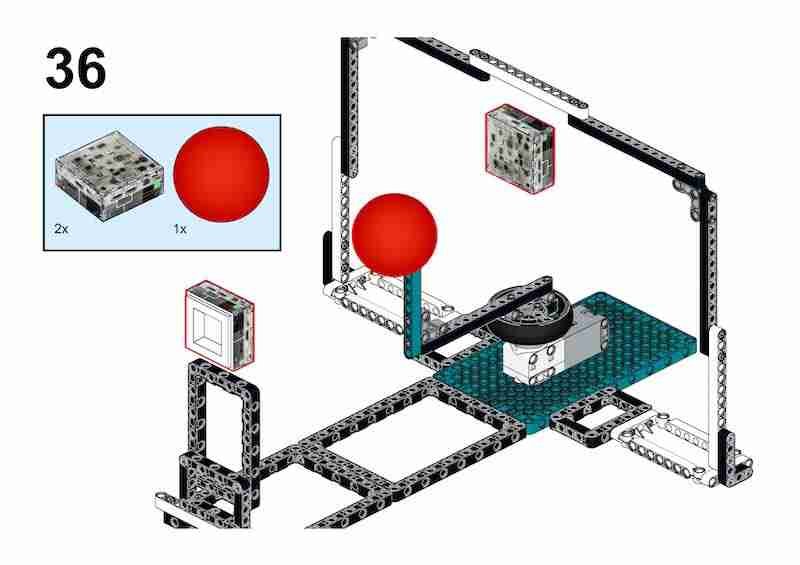Introduction
Space education continues to capture the imaginations of students and educators alike. With the increasing focus on STEM (Science, Technology, Engineering, and Mathematics) in classrooms, hands-on activities that demonstrate real-world scientific methods are more important than ever. databot, with its versatile sensor capabilities, provides an engaging way to bring these concepts to life.
Today, you can feel like a great scientist using a databot and its ambient light sensor. You’ll learn about the transit method for identifying exoplanets. This technique has helped astronomers discover thousands of planets beyond our solar system.
What is the Transit Method?
The transit method is a popular technique used by astronomers to detect exoplanets. This method involves monitoring the light from a star and observing small dips in brightness that occur when a planet passes in front of it. These dips, or transits, are telltale signs of an orbiting planet, allowing scientists to determine the planet’s size, orbit, and sometimes even its atmospheric composition.
Bringing the Transit Method to the Classroom
databot makes it easy to demonstrate the transit method to students with a simple, hands-on experiment. By using databot’s ambient light sensor, educators can easily simulate the detection of an exoplanet in the classroom. You can also use two databots where one acts as the light source and the other is sensing the change in light intensity. See the video below and setup instructions using LEGO® robotics as a great example. You can develop your own solution based on the availability of resources in your classroom, the important part is to have a light sensor to gather the data for analysis.

How to Setup and Demonstrate the Transit Method in Your Classroom
- Setup: Create a model that will pass a small object (representing a planet) in front of a bright light source (representing a star) on a regular cycle, representing the time a planet might take to orbit its star. See the LEGO® model as an example, if you don’t have LEGO® materials create your own solution.
- Data Collection: Position databot’s ambient light sensor facing the light source and start the experiment. As the object moves in front of the light, databot will record the changes in light intensity.
- Analysis: Students can then analyze the data, identifying the moments when the light dims as the object transits the “star.” This data can be used to understand the principles of the transit method and how astronomers detect exoplanets.
How to Setup and Demonstrate the Transit Method in Your Classroom
- Setup: Create a model that will pass a small object (representing a planet) in front of a bright light source (representing a star) on a regular cycle, representing the time a planet might take to orbit its star. See the LEGO® model as an example, if you don’t have LEGO® materials create your own solution.
- Data Collection: Position databot’s ambient light sensor facing the light source and start the experiment. As the object moves in front of the light, databot will record the changes in light intensity.
- Analysis: Students can then analyze the data, identifying the moments when the light dims as the object transits the “star.” This data can be used to understand the principles of the transit method and how astronomers detect exoplanets.
A Classroom Example of the Transit Method using LEGO® Robotics
Here is a video of a working model demonstrating the Transit Method of identifying exoplanets!
Files for Implementing this Model in Your Classroom!
Why This Activity is Important
This project not only introduces students to a cutting-edge method used in astronomy but also reinforces key STEM concepts such as data collection, analysis, and scientific reasoning. By engaging in this activity, students can better understand the importance of light in space exploration and the sophisticated techniques used to explore the universe.
Connecting to NASA and Space Education
For educators, this activity ties seamlessly into existing NASA lesson plans and broader space education initiatives. It provides a practical demonstration of how the tools and methods used by professional astronomers can be adapted for the classroom. Whether you’re launching rockets or exploring exoplanets, databot offers a unique and interactive way to bring space science to life for students.
Conclusion
With the transit method project, databot continues to be a valuable tool for educators looking to enrich their space education curriculum. By making complex concepts accessible and engaging, databot helps students explore the wonders of the universe in a hands-on and meaningful way. Whether you’re a middle school teacher introducing basic astronomy or a high school educator diving deeper into space science, this activity is an engaging and effective approach to spicing up your space education lesson plans.



